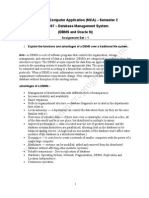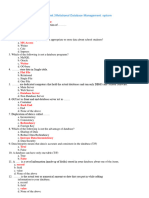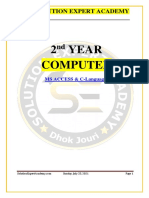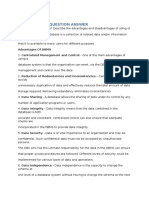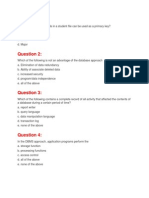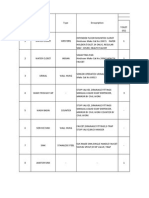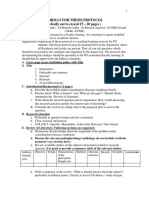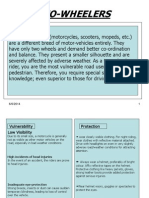0% found this document useful (0 votes)
166 views4 pagesDBMS Week 1 - Tutorial 1
1. The document provides a tutorial on database management systems covering topics like the definition of a database, advantages of DBMS over file processing systems, database terminology like attributes, relations, tuples, keys, and more.
2. It includes 10 multiple choice questions testing understanding of these concepts.
3. The document also includes additional questions about database design, schema, data hierarchy, definitions of terms, and components of a database system.
Uploaded by
slamdon2002Copyright
© Attribution Non-Commercial (BY-NC)
We take content rights seriously. If you suspect this is your content, claim it here.
Available Formats
Download as DOC, PDF, TXT or read online on Scribd
0% found this document useful (0 votes)
166 views4 pagesDBMS Week 1 - Tutorial 1
1. The document provides a tutorial on database management systems covering topics like the definition of a database, advantages of DBMS over file processing systems, database terminology like attributes, relations, tuples, keys, and more.
2. It includes 10 multiple choice questions testing understanding of these concepts.
3. The document also includes additional questions about database design, schema, data hierarchy, definitions of terms, and components of a database system.
Uploaded by
slamdon2002Copyright
© Attribution Non-Commercial (BY-NC)
We take content rights seriously. If you suspect this is your content, claim it here.
Available Formats
Download as DOC, PDF, TXT or read online on Scribd
/ 4






















